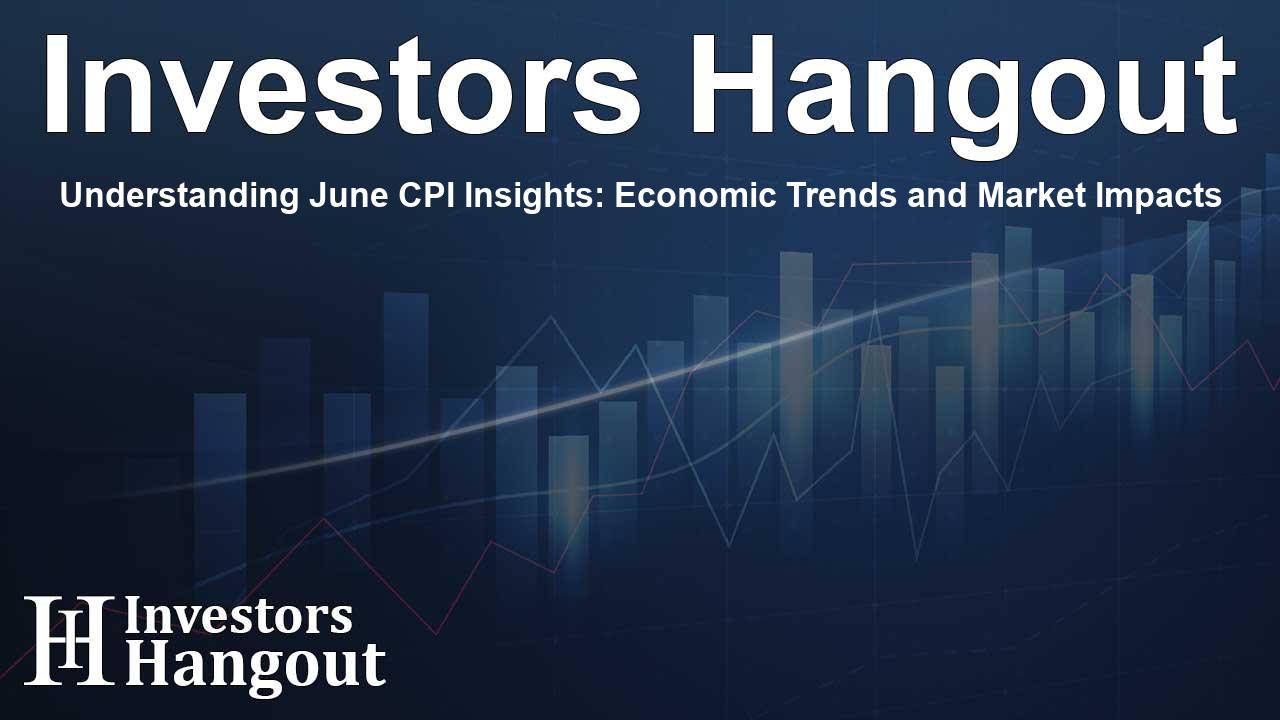Understanding June CPI Insights: Economic Trends and Market Impacts

Insights from Economists on the June CPI Report
As inflation continues to influence economic policies, leading economists have recently shared their perspectives on the June Consumer Price Index (CPI) report. This report highlighted that consumer prices increased by 0.3%, aligning closely with market expectations. While this increment follows a smaller rise of 0.1% in May, the annual growth rate for the CPI stands at 2.9%. Importantly, core inflation, which excludes volatile categories like food and energy, saw a rise of 2.7% compared to the previous year.
Understanding Consumer Price Movements
In a positive commentary on the recent CPI findings, Justin Wolfers, an economist from the University of Michigan, noted the significance of having "no bad news" emerging. His analysis emphasized that the results were largely as anticipated, indicating a stable economic environment. This tranquility in inflation metrics is welcomed amidst ongoing concerns about economic fluctuations.
Market and Tariff Influences
Another noteworthy perspective comes from Mohamed El-Erian, the former CEO of a prominent investment firm. He articulated that these figures would likely elevate pressure on the Federal Reserve to consider reducing interest rates. However, he cautioned that changing Fed policies might not be immediate, as officials have reiterated their cautious approach.
Key Aspects of Core CPI
In contrast, Jason Furman, a former advisor and Harvard economist, provides a more nuanced view. Furman acknowledges that while core CPI remains below the critical 3% threshold, he raises concerns about the distortions caused by tariffs. He points to notable price increases in sectors severely affected by tariffs, such as home appliances and clothing, which could impact economic stability moving forward.
Future Economic Expectations
Furman’s observations extend to the effects of pre-tariff inventory management by companies. The anticipation of rising costs could exacerbate inflation in future reports as these inventories deplete. The landscape remains dynamic, with various external factors influencing price stability.
Implications for Federal Policies
In light of this CPI report, political figures—including the former president—have urged the Federal Reserve to take action, arguing for lower rates. However, economists like Mike Konczal have cautioned against viewing this CPI print as entirely favorable. Their insights suggest a more complex economic reality that the Federal Reserve must navigate while making policy decisions.
Concerns for Future Inflation Rates
With ongoing dialogues about tariffs and inflation rates, Federal Reserve Chair Jerome Powell has remained vigilant. In recent discussions, he emphasized that anticipated tariff increases this year could have a significant impact on consumer prices and overall economic activity, highlighting ongoing concerns in the investment landscape.
In conclusion, the analysis of June's CPI numbers exhibits a cautious optimism alongside critical economic challenges. As various economists weigh in, it becomes evident that understanding inflation trends is crucial for evaluating investment opportunities and broader market implications. Stakeholders will need to stay informed as ongoing developments shape the economic landscape and influence monetary policy decisions.
Frequently Asked Questions
What does the June CPI report indicate about inflation?
The June CPI report shows a 0.3% increase in consumer prices, aligning with expectations, while the annual inflation rate stands at 2.9%.
How are tariffs affecting inflation according to economists?
Economists indicate that tariffs are distorting key inflation segments, leading to increased prices in sensitive categories like appliances and apparel.
What is the future outlook for Federal interest rates?
While some economists expect pressure on the Fed to lower rates, others believe this may not sway officials based on their stated criteria for policy adjustments.
Why is the core inflation rate significant?
The core inflation rate, which excludes volatile items, is significant as it provides a clearer view of underlying inflation trends, crucial for policy decisions.
How can rising tariffs impact economic activity?
Rising tariffs may lead to increased consumer prices, which could weigh on economic growth and investment trends, posing risks to overall market stability.
About The Author
Contact Henry Turner privately here. Or send an email with ATTN: Henry Turner as the subject to contact@investorshangout.com.
About Investors Hangout
Investors Hangout is a leading online stock forum for financial discussion and learning, offering a wide range of free tools and resources. It draws in traders of all levels, who exchange market knowledge, investigate trading tactics, and keep an eye on industry developments in real time. Featuring financial articles, stock message boards, quotes, charts, company profiles, and live news updates. Through cooperative learning and a wealth of informational resources, it helps users from novices creating their first portfolios to experts honing their techniques. Join Investors Hangout today: https://investorshangout.com/
The content of this article is based on factual, publicly available information and does not represent legal, financial, or investment advice. Investors Hangout does not offer financial advice, and the author is not a licensed financial advisor. Consult a qualified advisor before making any financial or investment decisions based on this article. This article should not be considered advice to purchase, sell, or hold any securities or other investments. If any of the material provided here is inaccurate, please contact us for corrections.
